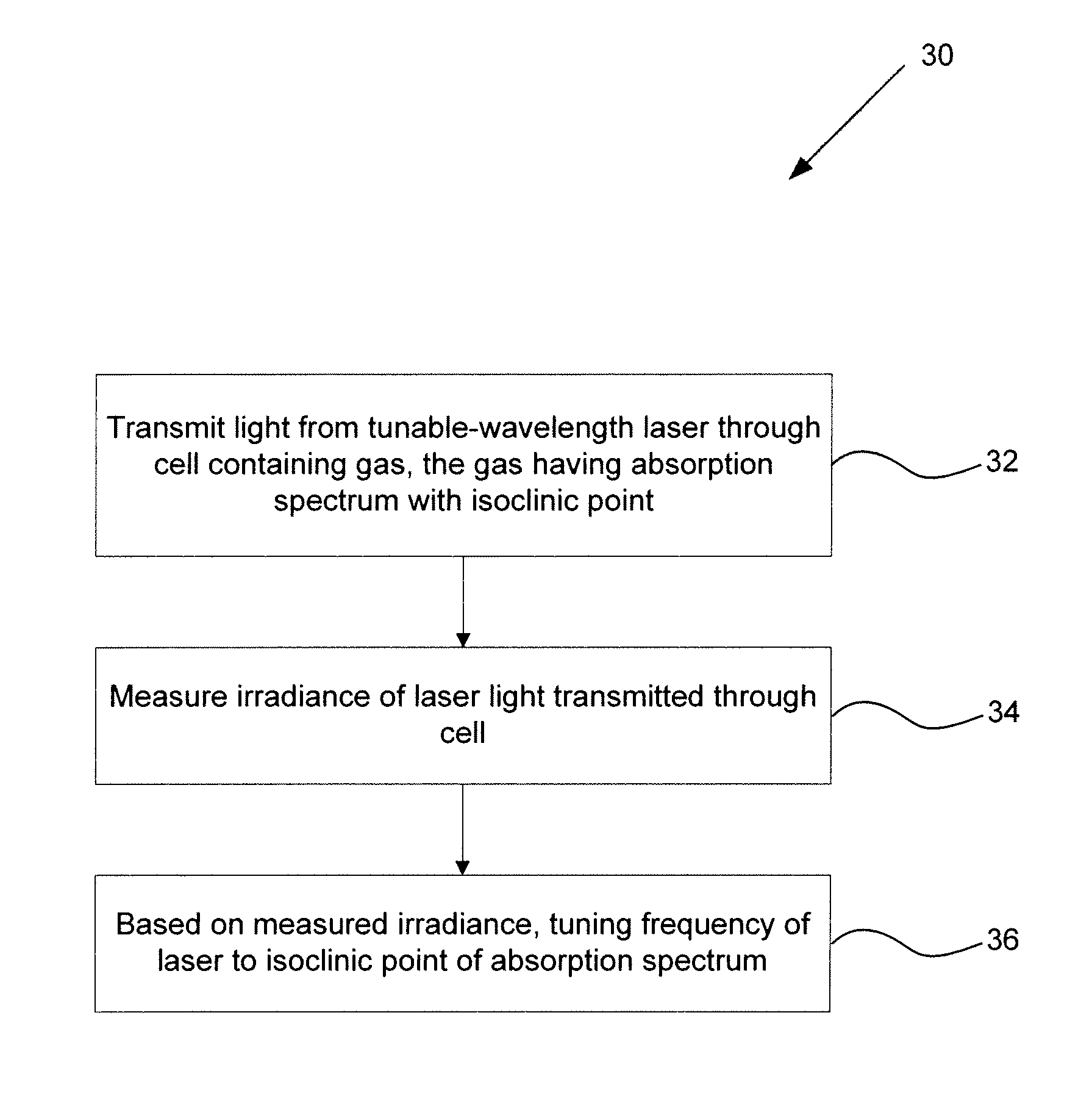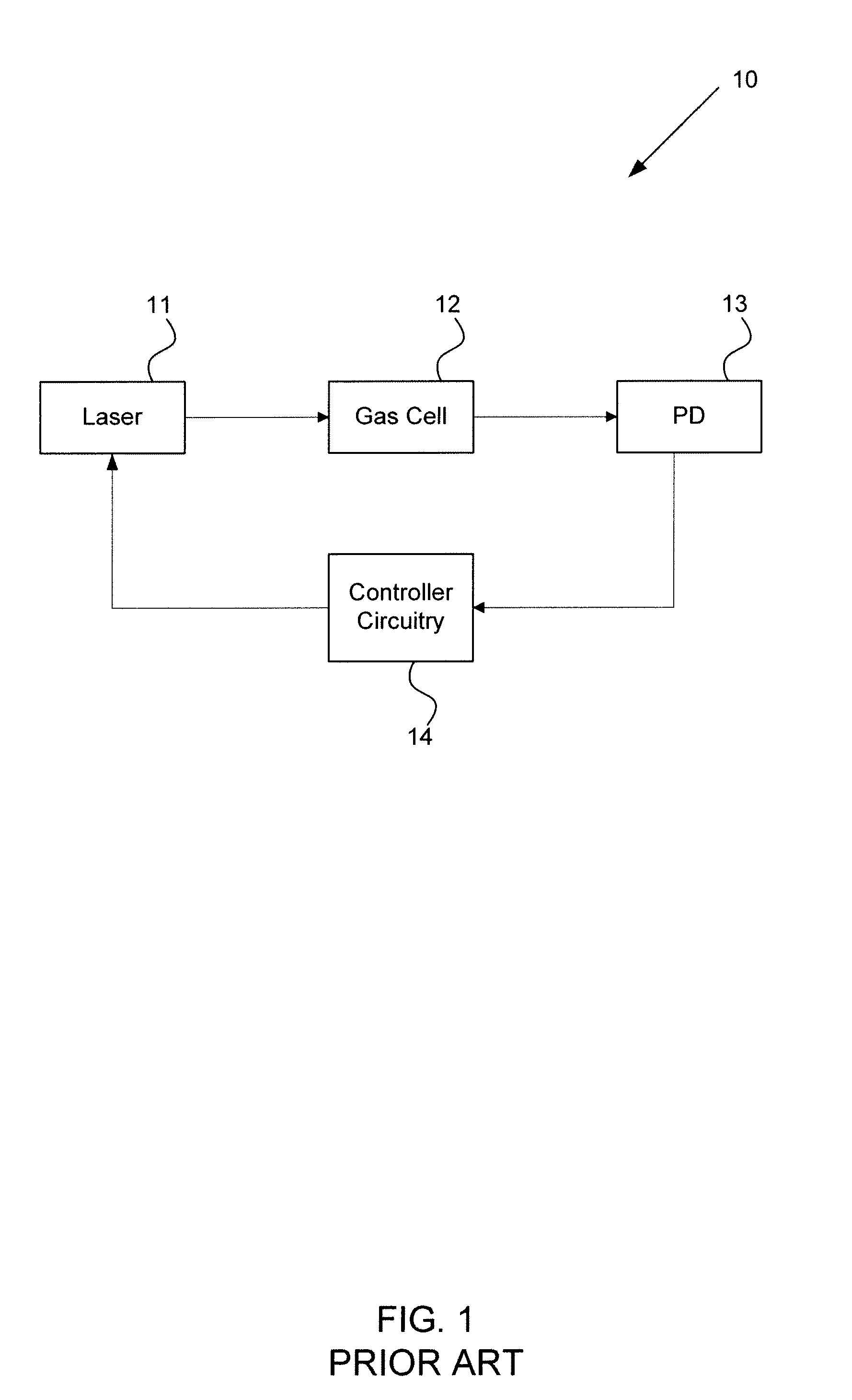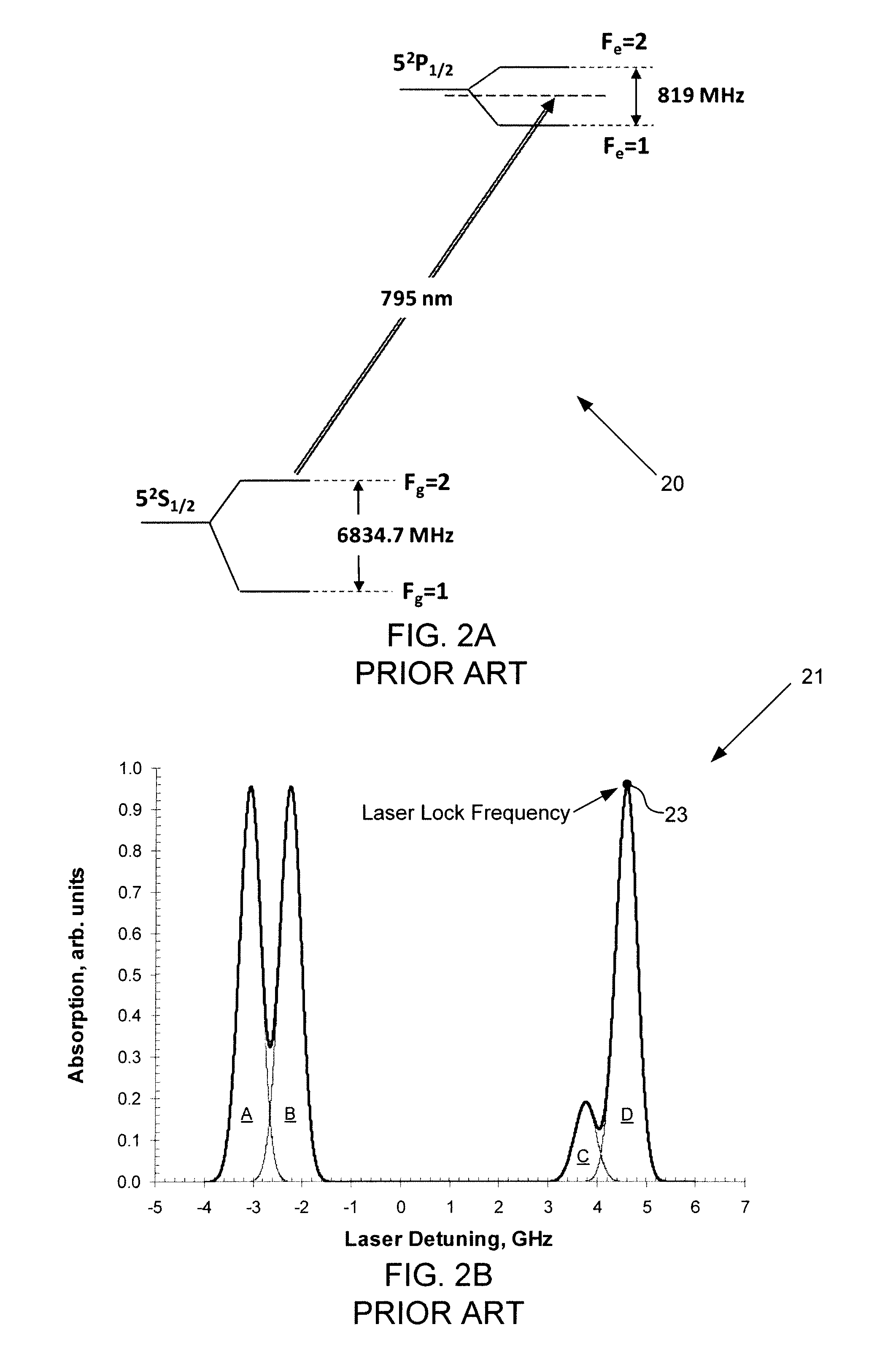Systems And Methods For Stabilizing Laser Frequency Based On An Isoclinic Point In The Absorption Spectrum Of A Gas
a laser frequency and isoclinic point technology, applied in the direction of laser details, semiconductor lasers, electrical equipment, etc., can solve the problems of affecting the accuracy of laser beams. , to achieve the effect of less susceptible and same broadening
- Summary
- Abstract
- Description
- Claims
- Application Information
AI Technical Summary
Benefits of technology
Problems solved by technology
Method used
Image
Examples
Embodiment Construction
Overview
[0029]Embodiments of the present invention provide systems and methods for stabilizing laser frequency based on an isoclinic point in the absorption spectrum of a gas. As noted above, prior art systems for stabilizing laser frequency have typically been based on locking the laser frequency to an absorption peak of a gas. However, such a peak may be susceptible to pulling caused by lineshape overlap due to Doppler broadening, which can vary the frequency of the peak—and the laser—as a function of temperature. By comparison, the present inventors have recognized that the absorption spectra of some gases contain isoclinic points to which the laser can be locked, and that do not substantially change in frequency as a function of physical system parameters, such as temperature or pressure. As used herein, an isoclinic point is defined as “[a] wavelength, wavenumber, or frequency at which the first derivative of an absorption spectrum of a sample does not change upon a chemical re...
PUM
 Login to View More
Login to View More Abstract
Description
Claims
Application Information
 Login to View More
Login to View More - R&D
- Intellectual Property
- Life Sciences
- Materials
- Tech Scout
- Unparalleled Data Quality
- Higher Quality Content
- 60% Fewer Hallucinations
Browse by: Latest US Patents, China's latest patents, Technical Efficacy Thesaurus, Application Domain, Technology Topic, Popular Technical Reports.
© 2025 PatSnap. All rights reserved.Legal|Privacy policy|Modern Slavery Act Transparency Statement|Sitemap|About US| Contact US: help@patsnap.com



